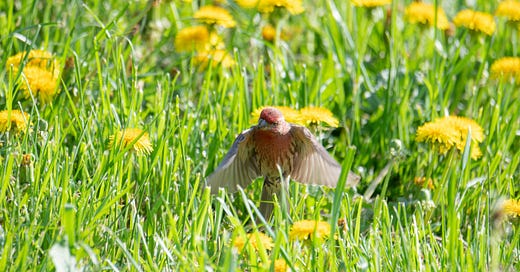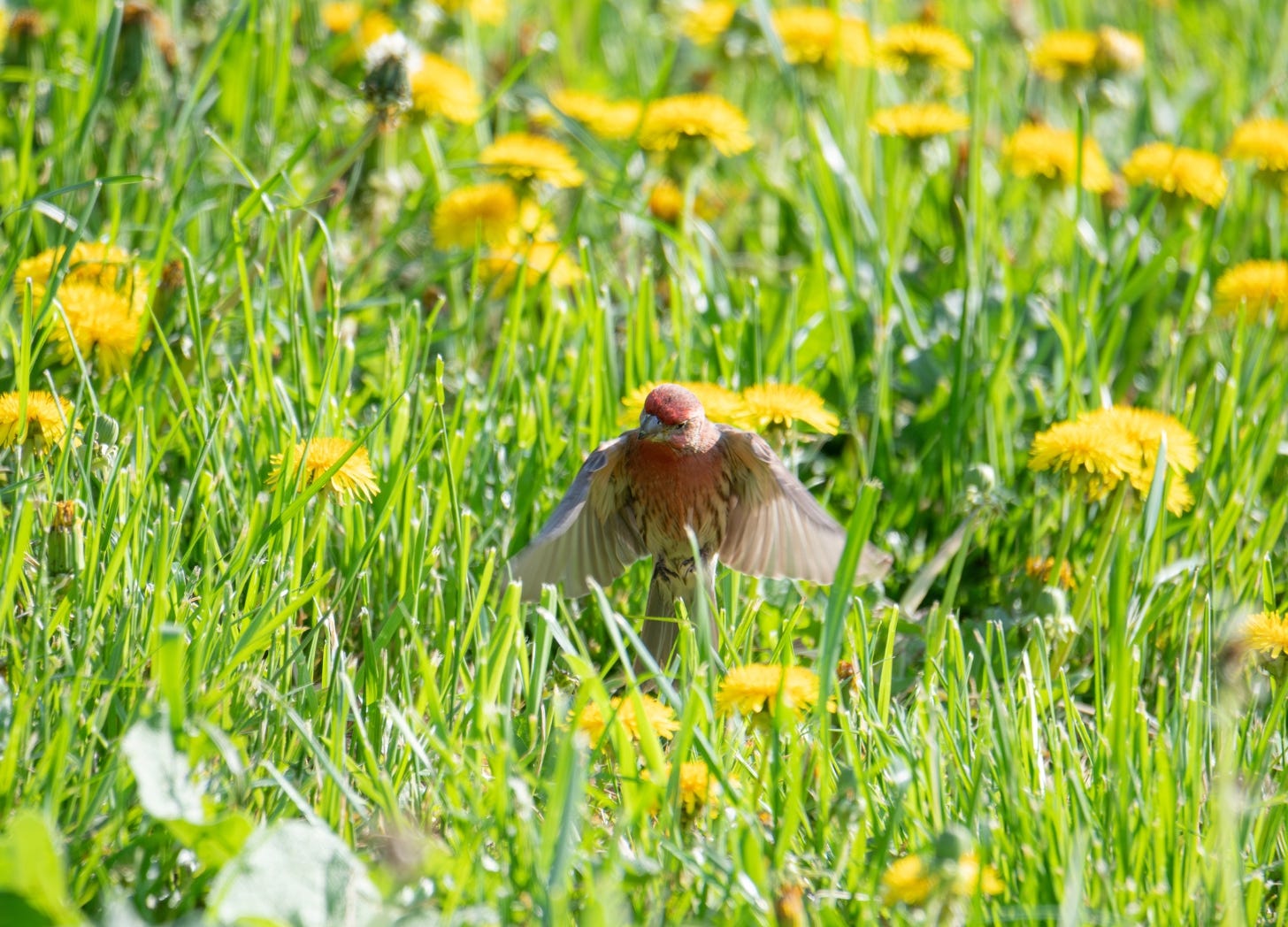No Mow May: Good Idea or Not?
This buzzy campaign is supposed to help bees, but is it really such a good idea?
Since today is May 1, this week’s edition of Good Ideas is all about the No Mow May campaign. As the name implies, No Mow May urges people to forego mowing their lawns until June, giving wildflowers a chance to bloom and support pollinators like butterflies and bees. It’s a buzzy term, but is it a good idea?
The lowdown on lawns
Lawns do not exist in nature. The concept of the trim, uniform lawn originated in 18th century England, where it was considered a status symbol; only the rich could afford the labour and resources to weed, trim, and water grass. European colonizers brought their love of lawns to North America, where the concept quickly took root.
“Lawns cover more than 40 million acres of the U.S.,” says Lorraine Johnson, native plant advocate and author. Here in Canada, more than two-thirds of Canadian households had a lawn in 2021. In 2023 Canadian sod farmers sold 21, 207 hectares — enough to sod at least 42,000 football fields.
“That's a huge amount of land with very little biodiversity and offering virtually no support for pollinators,” says Johnson.
Lawns require significant amounts of water, and many are treated with chemical fertilizers, pesticides and herbicides. These chemicals can harm native pollinators and wildlife, and they wash into our waterways during rain or irrigation, contaminating aquatic ecosystems. Mowing with gas or diesel lawn mowers also creates emissions that pollute air and contribute to climate change.
All this work — and environmental damage — is done for a monoculture that offers no ecological benefit in return.
Is No Mow May Enough?
Although No Mow May was intended to encourage pollinator habitat (albeit temporarily), what it’s really done is spark a conversation about the ecological impact of lawns, why we’re obsessed with them, and what we can grow instead. It also allows people to become accustomed to the idea of a “messy” lawn.
According to Johnson, “No Mow May is a challenge to the traditional lawn aesthetic, and that's valuable, I think, because a lot of ecological damage has been done in the name of the traditional lawn aesthetic.”
Unfortunately, not mowing for a month does little for pollinators. A lawn left un-mown is still a lawn; it does not suddenly transform into a thriving meadow of native wildflowers. If any flowers do pop up, they’ll likely be non-native dandelions, nature’s equivalent of junk food. While dandelions do provide bees with nectar and pollen, their pollen is low in amino acids — which are critical for raising broods.
The other issue with the No Mow May campaign is the name itself, with its insinuation that we can simply put off mowing for a month, then continue tending to our lawns (and ignoring nature) as per usual. With biodiversity declining at an alarming rate, we need meaningful, long-term solutions.
“We don't need just one month a year of habitat,” says Johnson. “That's not enough.”
Solutions beyond No Mow May
Not mowing in May is a start, but there are other ways to support biodiversity throughout the seasons.
Cut back on grass
Consider replacing your lawn, or part of it, with gardens composed of native perennials. A diverse mix of native plants — shrubs, flowers, and grasses — support birds, pollinators, and other wildlife throughout the year. Native plants also require less water and maintenance than traditional lawns or gardens. If you want to keep a patch of lawn, you can add a border of native plants.
If you aren’t sure where to start, Lorraine Johnson has published several excellent books on gardening with native plants. Another excellent resource is Bird Gardens, a website that helps you choose what to plant based on your zone, site conditions, plant preferences, and even the types of birds you want to attract.
Add a “nurse log” to your garden
The term nurse log traditionally refers to a fallen tree, but it can be a thoughtfully placed log or branch in your garden. Nurse logs create a diverse habitat for various organisms, including fungi, mosses, insects, and small animals, which can further contribute to the nutrient cycle and ecosystem. They can also serve as a platform for other plants to grow. As nurse logs break down, they release nutrients into the soil. You can incorporate nurse logs into your landscape design, planning in or around them in creative ways.
Tackle invasive plants
The time you save not maintaining a lawn can be spent weeding and destroying invasive plants like dog-strangling vine, garlic mustard and English ivy.
Leave the leaves
Instead of raking up leaves into bags, leave them in your garden. Leaves are home to butterfly larvae, worms, and beneficial microbes. In the winter, animals like frogs, toads, moths and butterflies hibernate in leaf litter. If you have a lawn, you can rake the leaves into the garden bed. They will supply the soil with nutrients and act like a natural mulch.
With gardening season upon us, I hope you’ll be inspired by these ideas — and look for ways to increase biodiversity where you live. And if you have any other ideas to share, drop me a line! I’d love to hear from you.
Yours for the Greener Good,
Brett





